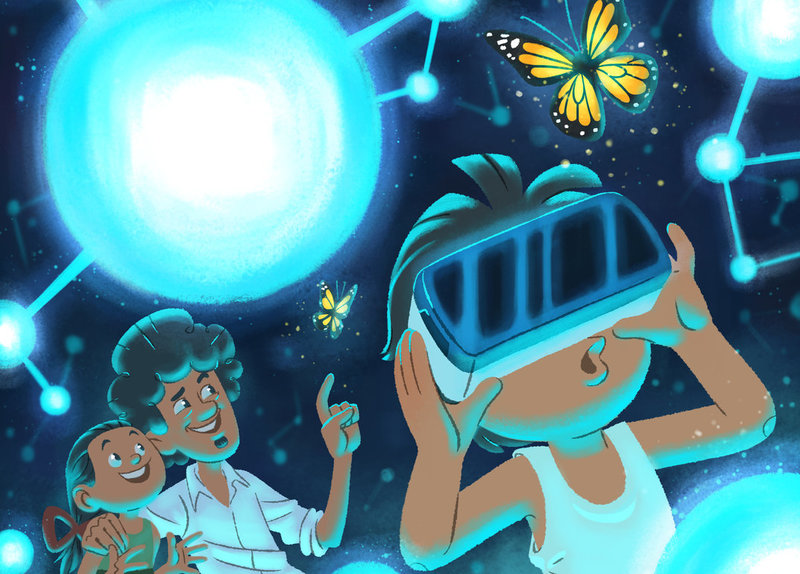Meet our community: Roberto Marcolin
Posted by Remya Padmadas on March 06, 2018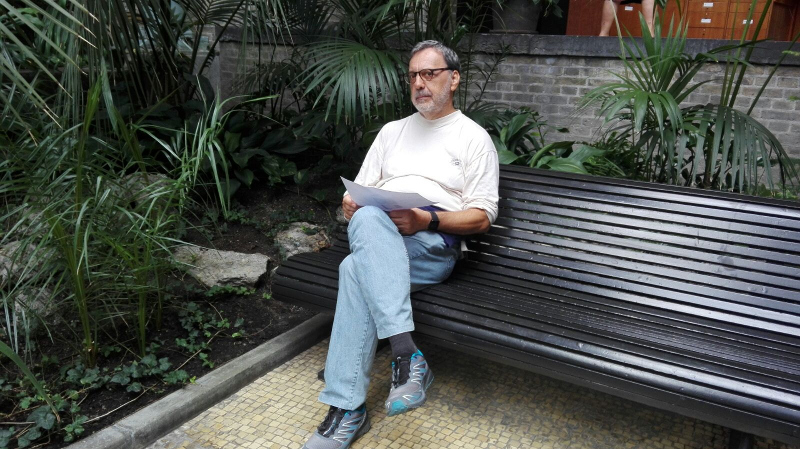
Roberto Marcolin is a High School teacher near Milan, Italy. He’s been doing some very interesting things with StoryWeaver both inside the classroom and out! Read on to find out more.
“I’m a teacher in a high school near Milan, Italy and I'm in charge of the school library. Our school recently participated in Libriamoci a Ministry of Education project to promote reading aloud. Many different classes in the school took part, with some students reading out loud stories from StoryWeaver in English. At the end of January, we took part in Piazze Solidali (Solidarity Squares), an event held in the public library of our city. At the event some of my students read StoryWeaver stories in six different languages: Albanian, Romanian, Arabic, Spanish, French and of course Italian."

A class from Roberto's school is participating in Etwinning a European project, students from the Czech Republic, Spain and Sweden. "Through this project they will translate books from English to their mother tongue on StoryWeaver. You can find the first seven stories translated to Italian on StoryWeaver."
Students read aloud stories from StoryWeaver at the Libriamoci event held in October, 2017.
Roberto has also made an audio version of ‘Ghum Ghum Gharial’s Glorious Adventure’ in Italian with Canoprof an open source software created by the French education ministry.
“Framapad is an open source software for collaborative writing which I used when preparing for the Piazza solidale event. I made some recordings of stories like this one and I hope to do others. I think they could be used to promote reading amongst students.”
Roberto has a few other ideas on how he would like to use StoryWeaver. “In 2018, I would like to organize a collaborative translation of some stories of StoryWeaver involving other teachers and students. The translators could meet in a place at school like the library and collaboratively translate some stories together. I would also like to create free digital libraries using StoryWeaver stories as my French colleague Cyrille Largillier has already done here.”
We look forward to hearing more from Roberto and his students this year!
If you are using stories in your classroom or library and would like to share it with our community, write to us at [email protected] and we’ll feature you on our blog!
Be the first to comment.Stupendous Spiders
Posted by Remya Padmadas on February 28, 2018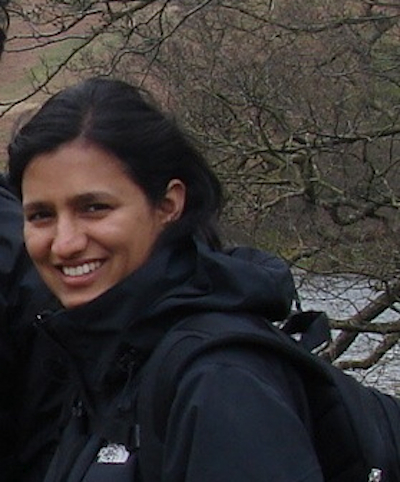
The little creature with many eyes and legs lurking in the nooks and crannies of your house and garden has a fascinating story behind it. Vena Kapoor, Programme Co-ordinator, Education and Public Engagement at the Nature Conservation Foundation has been working in the areas of conservation research and practice since 1998. Her early research was on rainforest restoration in the Western Ghats using spiders as an indicator species and developing conservation education and outreach material. Vena has written 'Off to See Spiders' for Pratham Books, a digital first STEM book illustrated by Pia Meenakshi. This story first appeared in The Hindu in School dated September 16, 2015.
Eight legs and eight eyes
Spun a web and caught three flies -----
What comes to your mind when someone says the word “spider” to you? Long hairy legs and sticky webs? A scary little creature lurking in some deep dark corner?
If you, like many people, don't like spiders, that's quite understandable since spiders rarely get much positive press. But I can guarantee that if you make a little effort to get to know spiders better, you will gradually get fascinated – and may even end up a bit obses- sive about them, like I am!
First, find a spider in your home or outside. Now, does it sit in a web that resembles a wheel, or does the web look like a complicated mess? Web building spiders can take anywhere between 20 minutes to a full day to spin their miniature architectural marvels. In many species it is only the female who weaves a web, and the males (much smaller in size) hang out at the edges, hoping to scrounge a meal.
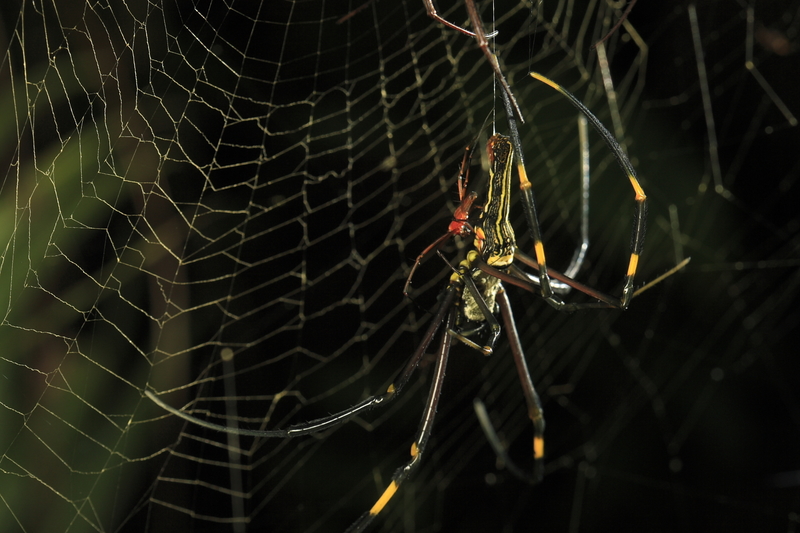
Femal Giant Wood Spider. Photograph by Sara.
Webs come in different shapes: a wheel, a dome, a thick white sheet, which becomes really prominent when there is heavy dew in the morning. Most spider webs are coated with a glue-like sub- stance to capture and hold steadfast any unfortunate insects that fly into them. Radiating lines of silk alert the waiting spider when something has been caught, else the poor-sighted spider might never know! A male web building spider strums and plucks the silk at the edge of the web to announce his arrival. If he is off-tune in his strumming the male is either ignored or eaten by the female!
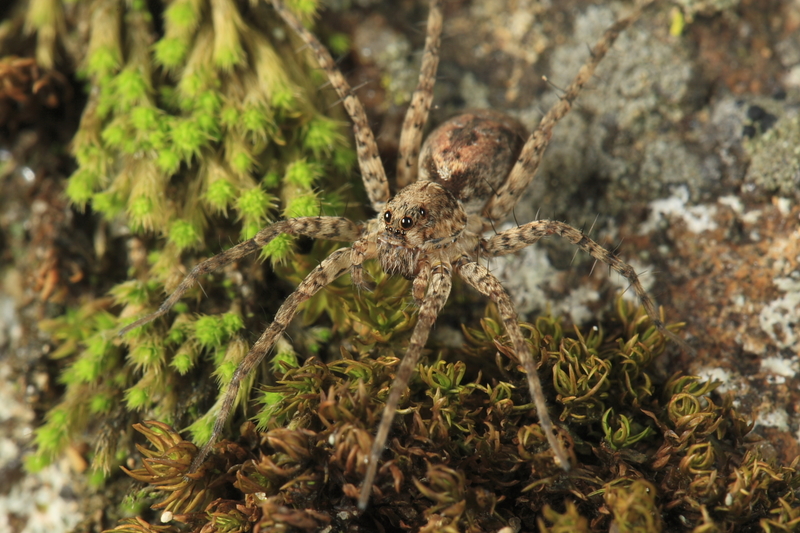
Wolf Spider. Photograph by Sara.
Perhaps you have come across a spider scurrying quickly about or jumping around athletically, with no web in sight? These spiders are known as hunting spiders and they rely on camouflage, stealth and deceit to get their food. Look for these spunky spiders in your house, on plants or on leaf litter on the ground. Sometimes looking closely at a flower will reveal a small brightly coloured spider that resembles a crab! These crab spiders often match the colour of the flower they live on; and an unsuspecting bee visiting the flower for nectar is soon made a meal of.
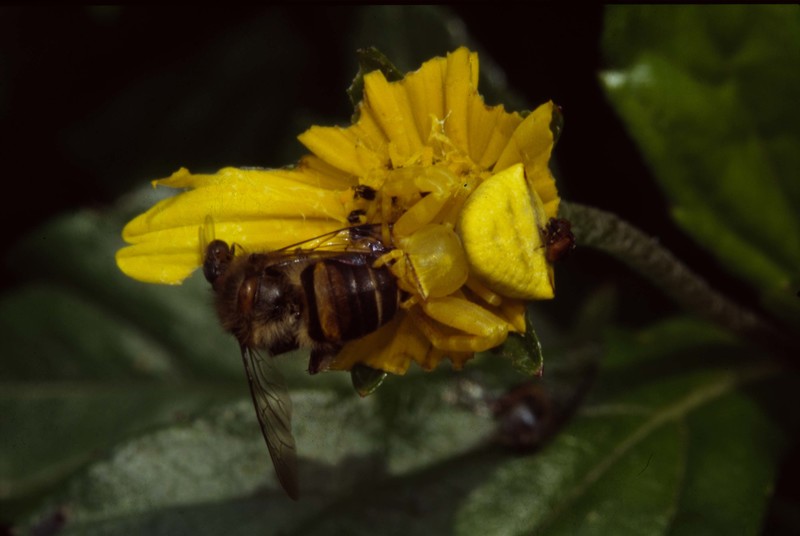
Crab Spider. Photograph by Robin Rozario.
Hunting spiders with their keener eyesight are also often brilliantly coloured, which helps to impress a female, since they have no webs to strum on. They often also perform elaborate courtship dances, which consist of swaying movements of their body and legs.
The world of spiders is weird and wonderful indeed. So the next time someone asks you if you would like to go bird watching, decline politely and tell them that you would rather go spider watching!
If you'd like to go on a spider walk right now, read Vena and Pia's book 'Off to See Spiders!' on StoryWeaver.
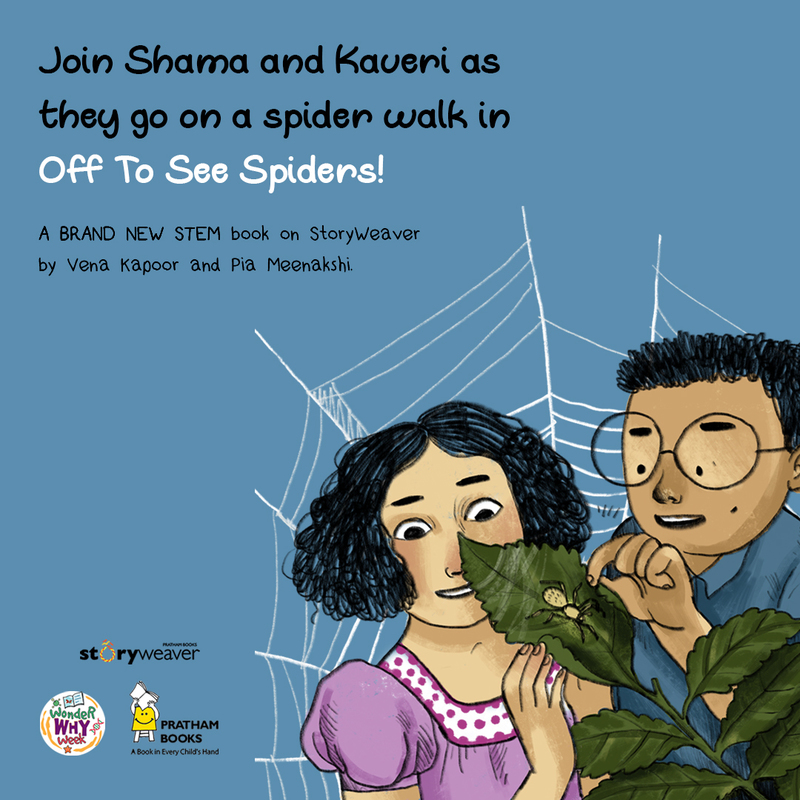
Be the first to comment.
The Magic of Technology
Posted by Remya Padmadas on February 27, 2018
Vidya Pradhan is a freelance writer and editor based in California. She loves the intricacies of language and is learning Spanish to better teach English to native Spanish speakers. She has written several children's books and is currently writing and editing a memoir for a prominent businessperson. In her spare time she hikes and plays Scrabble. Vidya wrote Lazy Mama for Pratham Books, a brand new STEM picture book about virtual reality.
